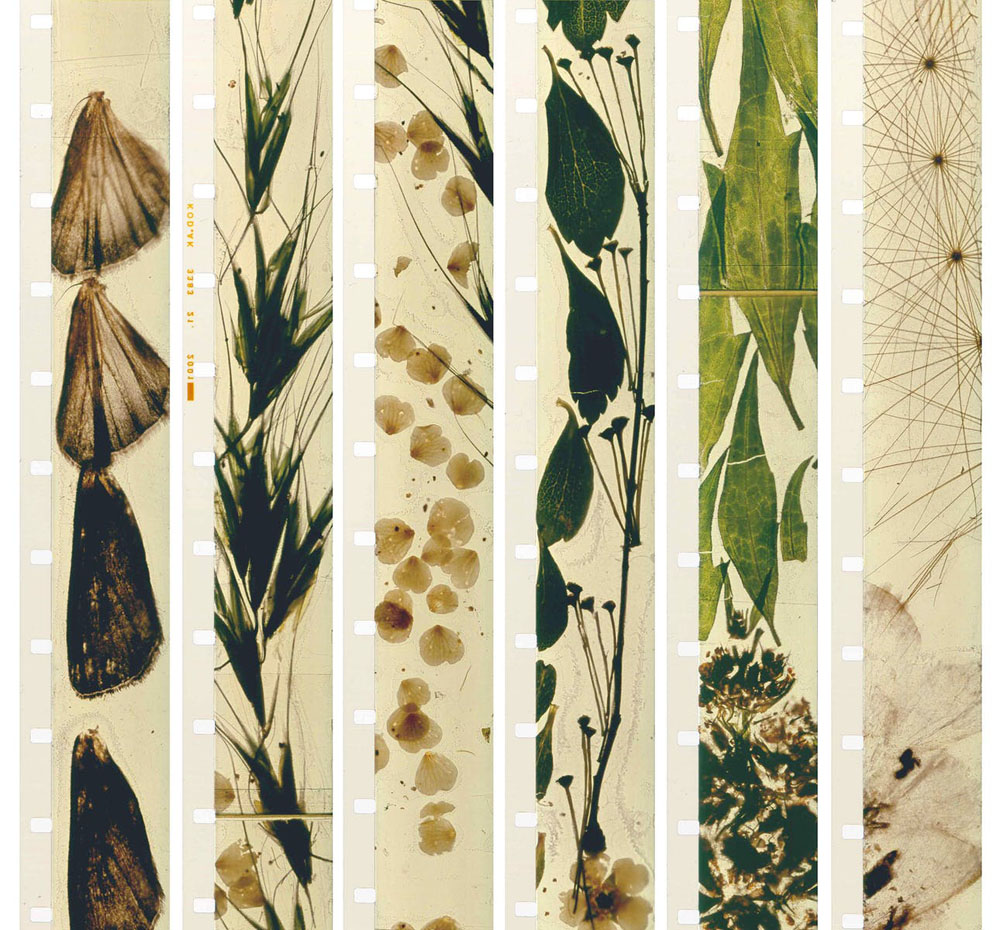To Robert Kelly,
August 22, 1963
I have been working almost entirely on Mothlight these days and finding it THE most difficult film to finish, at least per length (about 100’) I’ve yet been involved in (I had to pause after involved to decide whether in or with should follow; and this ambiguity illustrates my difficulty with the film itself—a difficulty engendered by the creation of a whole new film technique, a new niche into which few of my previous working techniques will function adequately enough to leave me free to be myself, to be, myself, adequately functioning instrument for the film’s simple passage thru me . . . technical considerations, as conscious thoughts, making me be by myself, eventually beside myself, at every turn; so that “involved with” would describe a great many of the moments in the making of Mothlight, tho’ I have always had sense enough once past eventu-or-crisis-ally to follow The Dance rather than take over as I was often tempted.)
Long after I’d begun making strips of film, with no thought other than creating a frame at a time in relationship to all other frames within a given strip (the length of Mylar1 I’d cut off, rather arbitrarily, before beginning to stick a given collection of parts of a plant or plants, etc., onto it), the words came to me: “As a moth might see from birth to death if black were white:” and shortly thereafter the title: Mothlight. Up till then I had thought-up the title: Dead Spring: growing out of a simple pun on the process, the material involved, and the simulation of life which the eventual unwinding of this film would create of the material by way of this process, etc. But these new words, in their coming to me, made me aware of the extent to which the movements of this film were inspired by my previous thoughts, observations, and study (most recently D’Arcy Thompson’s Growth and Form) on the flight of the moth and moth sight, etcetera. I have been very involved with moths since a curious incident in early winter 1959: I was working on Sirius Remembered—it was late at night and Jane [born Mary Jane Collom; now Jane Wodening; married Stan Brakhage in 1957; divorced in 1987] had gone to bed—I was sty-my-eyed sinking into sty-meeeed in all self-possession when suddenly Jane appeared holding a small dried plant which she put down on my working table and, without a word, left me—and I soon began working again and then noticing that the plant was shifting and that I had, without thinking, been picking up whatever its flattened petals, and sometimes its stem, had seemed to be pointing to; but as soon as I took notice of this interaction my relationship to this plant broke down into speculation, etcetera, until I stopped working altogether . . . the next morning, much to my surprise, Jane had no memory whatsoever of having brought me the plant; and the following night I returned to my work table, and the plant thereon, in a struggling-to-be-open, preventing opening, frame of mind . . . in midst of attempts to work, what must surely have been the year’s last moth, and a gigantic multi-colored beauty at that, began fluttering about me and along the work table, the wind of its wings shifting the plant from time to time and blowing away all speculations in my mind as to movements of dead plants and enabling me to continue working and, later, to notice that I was again often, but not always, moving in relationship to plant-points and moth-moves and, in fact, every moving thing within the workroom; but finally I got hung-up like they say, on the moth itself, its movements, particularly when it began settling first on one then another strip of film hanging beside me . . . the next day I photographed this moth in extreme close-up as it fluttered against the window glass, with the specific idea in mind to use those images in Dog Star Man (which I already have) and Jane and I were referring to the moth as “The Moth Queen” and were quite excited by the entire several days’ events (which naturally distracted from continuing work on Sirius Remembered) . . . by the third day I was beginning to worry about the moth; and we agreed that night to let the moth outside, as it was warm weather; but that night when I went to the workroom I found the moth dead on my table beside the dried plant and, on closer inspection, found that the head of the moth was as if sliced almost completely off, swinging as if hinged to the body, and that the body itself was completely hollow inside . . . both plant and moth remained on my table, without undue attention but constant inter-relation, until the end of the editing of Sirius Remembered.
(…)
Metaphors on Vision is being republished by Anthology Film Archives and Light Industry.


